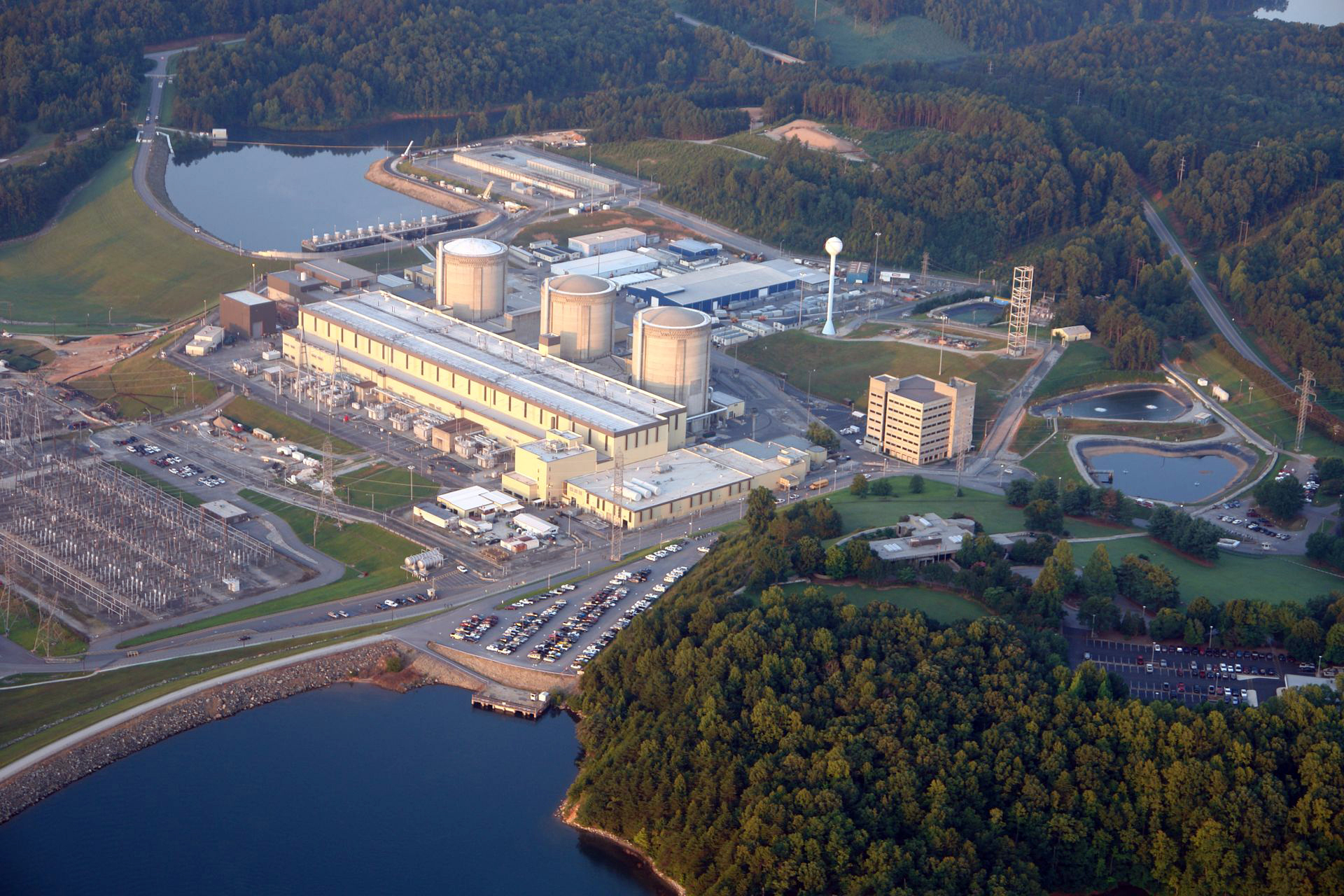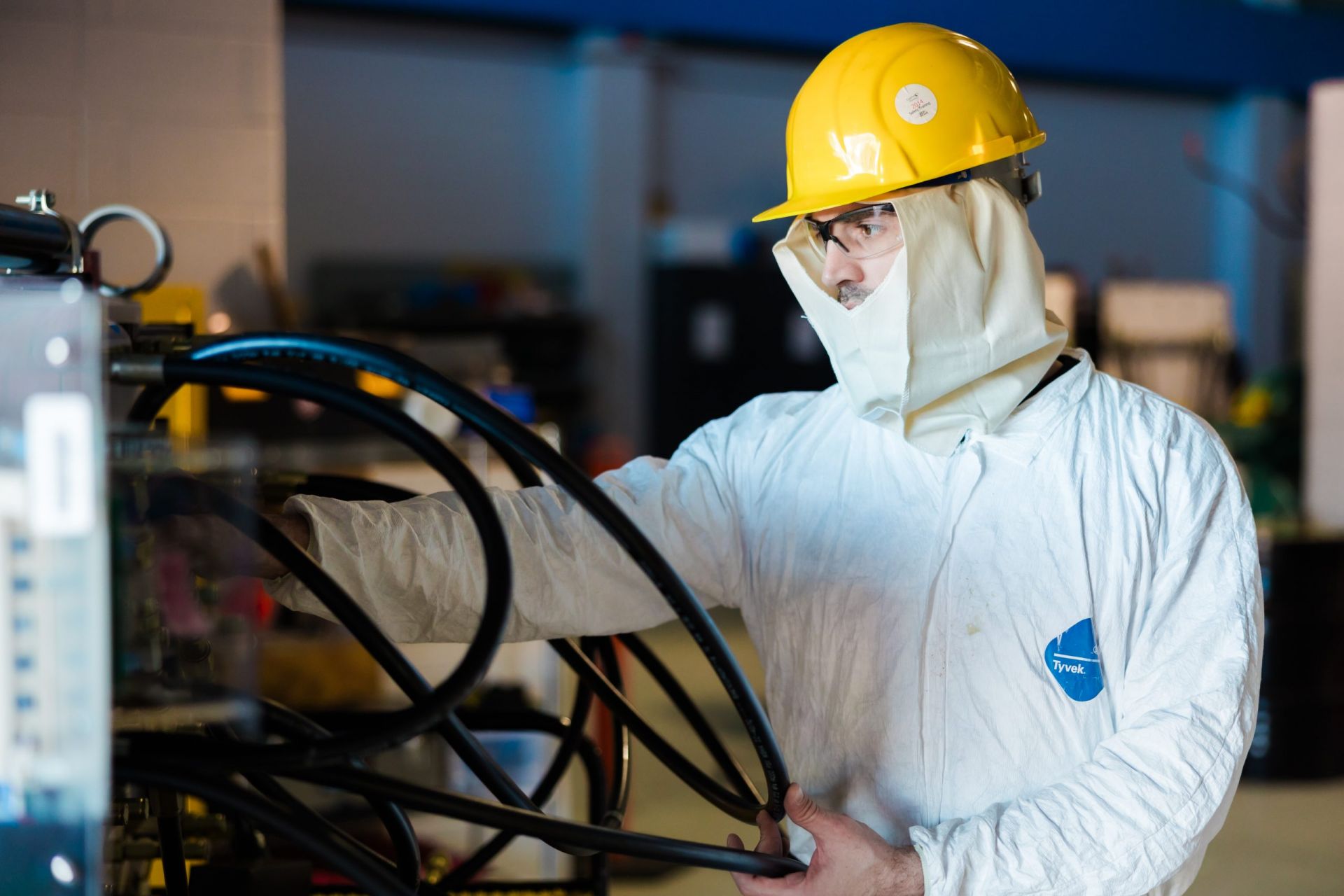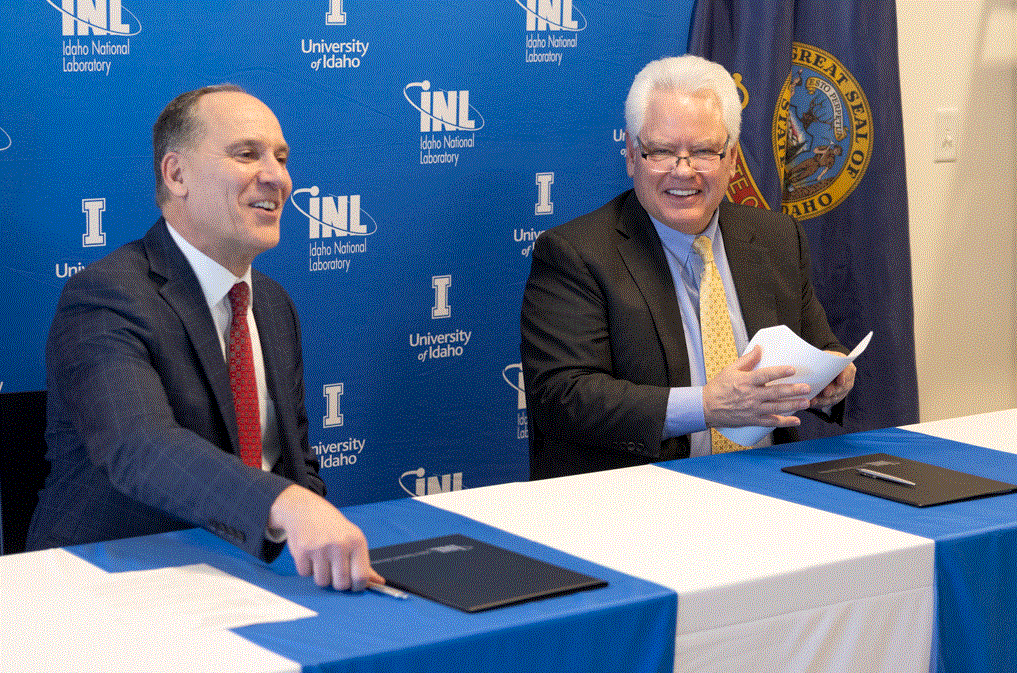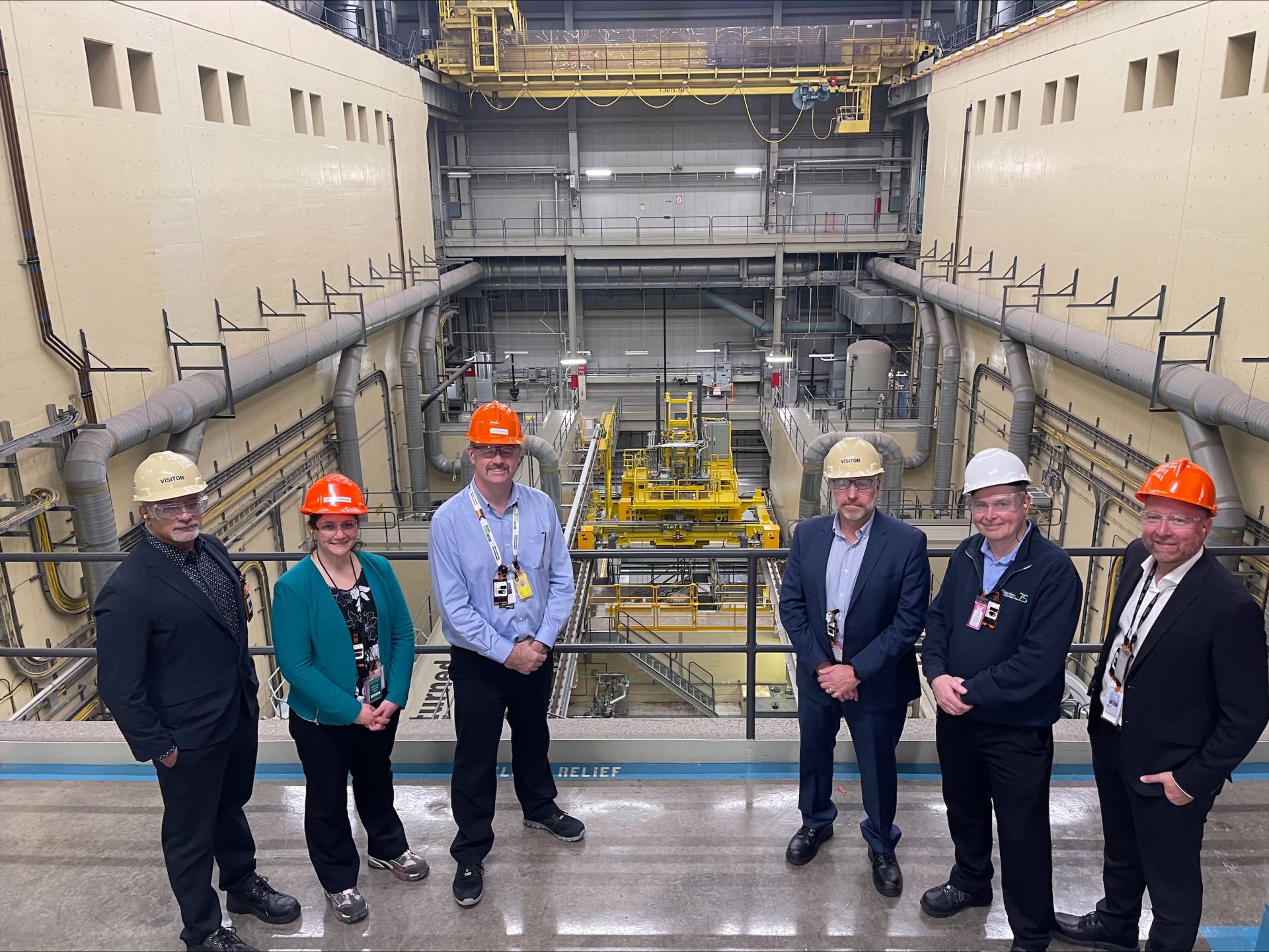Palo Verde nuclear power plant, near Tonopah, Ariz. (Photo: APS)
The top three utilities in Arizona are teaming up to explore opportunities to add nuclear generation facilities in the state.
Arizona Public Service (APS), Salt River Project (SRP), and Tucson Electric Power (TEP) announced in a February 5 news release that they are working together to assess possible sites, including retiring coal plants. The group is looking at possibilities for both small modular reactors—units generating 300 MW or less—and potential large reactor projects, which could generate nearly five times the power.
Oconee nuclear power plant. (Photo: Duke Energy)
The Nuclear Regulatory Commission has published its final environmental impact statement for the proposed subsequent license renewal (SLR) for Oconee nuclear power plant's Units 1, 2, and 3.
AI-powered imaging from Argonne reveals hidden flaws in stainless steel and could boost safety in critical industries
Advanced metal components produced through additive manufacturing can highlight the potential for cutting-edge technologies like AI-enhanced defect detection to ensure their reliability. (Photo: Shutterstock/MarinaGrigorivna)
Imagine you’re constructing a bridge or designing an airplane, and everything appears flawless on the outside. However, microscopic flaws beneath the surface could weaken the entire structure over time.
These hidden defects can be difficult to detect with traditional inspection methods, but a new technology developed by scientists at the U.S. Department of Energy’s Argonne National Laboratory is changing that. Using artificial intelligence and advanced imaging techniques, researchers have developed a method to reveal these tiny flaws before they become critical problems.
Participants celebrate Texas A&M’s announcement about hosting SMR units from four nuclear companies. (Photo: Texas A&M)
Texas A&M chancellor John Sharp has announced that the university could soon become a home to small modular reactors from four advanced nuclear companies: Kairos Power, Natura Resources, Terrestrial Energy, and Aalo Atomics.
Photo: Cape Fear Community College
Cape Fear Community College (CFCC) in Wilmington, N.C., has appointed Kelli Davis its first Nuclear Technology program director. Davis has nearly 20 years of experience in nuclear power, including roles in chemistry, operations, and environmental supervision.
A ground breaking marked the beginning of advanced SMRs in Sweden. From left, Jenny Wirandi, head of engineering at OKG; Johan Svenningsson, chief executive of Uniper Sweden; Jacob Stedman, chief executive of Blykalla; Ebba Busch, Sweden’s minister for energy and business and deputy prime minister; and Per Erik Holsten, president of energy industries at ABB. (Photo: Marcus Beckford/Blykalla)
An official ground breaking on Monday for Swedish nuclear company Blykalla’s advanced reactor testing site marked a pivotal step in putting decades of research into action.
Concept art of NANO Nuclear’s ALIP MR-12 internal structure (skeleton). (Image: Nano Nuclear)
To better educate customers and stakeholders on its technology, NANO Nuclear Energy has opened a new demonstration facility in Westchester County, N.Y., that offers an up-close look at nonnuclear parts and components of the four microreactors the company has in development.
El Salvador foreign minister Alexandra Hill Tinoco and U.S. secretary of state Marco Rubio signed a nuclear energy MOU. (Photo: X)
Officials from the United States and the Republic of El Salvador signed a memorandum of understanding Monday, agreeing to cooperate on strategic civil nuclear development.
In one of his first acts in office, U.S. secretary of state Marco Rubio signed the MOU with El Salvadoran foreign minister Alexandra Hill Tinoco during his recent visit.
INL director John Wagner and University of Idaho president C. Scott Green at the SUPER agreement signing. (Photo: INL)
New Strategic Understanding for Premier Education and Research (SUPER) agreements signed by Idaho National Laboratory, Boise State University, and University of Idaho will foster collaboration among the institutions in advanced energy and cybersecurity projects. The five-year agreements are designed to open doors for research and development opportunities, while advancing existing research and development initiatives, including projects in nuclear energy and high-performance computing.
Concept art showing a FNPP design. (Image: Glosten)
A team of innovative companies has plans to bring floating nuclear power plants to U.S. ports.
Core Power, a maritime and nuclear technology company, announced in January a new partnership in with naval architecture company Glosten. The pair is working on a design for a floating nuclear power plant (FNPP) that could generate up to 175 gigawatt-hours of clean electricity annually and provide clean power to ships, equipment, and port vehicles, Offshore Energy reported.
OPG and Nordion employees at Darlington’s recently refurbished Unit 1, which has been modified to produce cobalt-60 isotopes. (Photo: OPG)
Ontario Power Generation in Canada announced that Unit 1 of its Darlington nuclear power plant, which has returned to service from refurbishment, is now producing the medical isotope cobalt-60. During refurbishment activities, OPG made modifications to the unit to allow it to produce Co-60, which is used to sterilize 30 percent of the world’s single-use medical devices, such as syringes, gloves, and implants.
Radiation is essential in medical diagnosis, cancer therapy, food irradiation, CT scans, security checks and detection, and many consumer products. It is ubiquitous and enormously beneficial to all forms of life on Earth.
January 31, 2025, 3:18PMNuclear NewsJong H. Kim, Gyuseong Cho, Kun-Woo Cho, Tae Soon Park & Keon W. Kang Despite its significant benefits, the public perception of radiation is generally negative due to its inherent nature: it is ubiquitous yet cannot be seen, heard, smelled, or touched—as if it were a ghost roaming around uncensored. The public is frightened of this seemingly creepy phantom they cannot detect with their senses. This unfounded fear has hampered the progress of the nuclear industry and radiation professions.

















